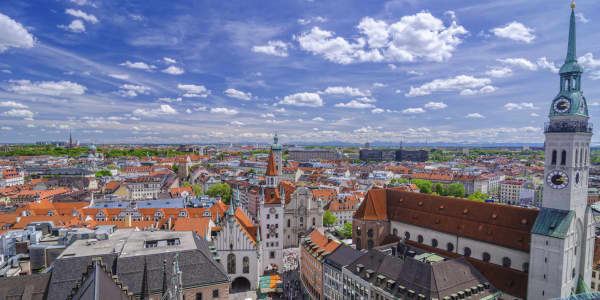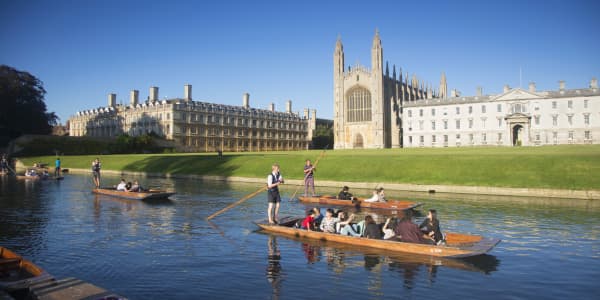
Danish architect Bjarke Ingels has ambitions. Big ones. Not content with designing iconic buildings in his homeland of Denmark, his firm, Bjarke Ingels Group (BIG), has crossed the Atlantic in a bid to revolutionize the way architects and planners think about high-density urban housing.
With the World Health Organization predicting a global urban population of 6.4 billion by 2050, architects and planners are constantly looking at ways to turn neglected urban spaces into affordable homes.
The problem is chronic. According to London Councils, a body which represents London's 33 local authorities, the capital requires 809,000 homes by 2021 to meet new housing needs. Bill de Blasio, the new Mayor of New York City, has pledged to build or preserve 200,000 affordable homes by 2020 to address the city's housing shortfall. There has been a rental vacancy rate of below five per cent in the city since 1965.
(Read more: Is this the classroom of the future?)
Ingels' philosophy seems deceptively simple: make people happy. "What's really going to make a home a happy place is what a resident does to it and in a way also the freedom a resident has to transform it," he told CNBC's Innovation Cities. "What we try to do is deliver an abundance of daylight, generous ceiling spaces, as nice views as possible, and access to big outdoor spaces," he added.
Big House, a primarily residential development in Copenhagen, illustrates BIG's philosophy. The building's sloping 'figure of eight' design allows residents to cycle – or walk – past terraced gardens all the way up to tenth floor penthouses. Between 30-35 homes in the Big House are rented out at affordable rates, in accordance with city laws, according to the Danish Architecture Center.
"The architecture certainly facilitates urban living in a modern sense," Merete Ries, who lives in the development, said. "It's certainly your own fault if you don't feel happy here," she added.
(Read more: 10 awesome, innovative skyscrapers)
In Vancouver, Ingels has designed a mixed-use development located next to the unprepossessing exit ramps of the city's Granville Bridge.
It will have the 151m tall "twisting" Beach and Howe Tower – a residential building complete with stunning views of water and mountains – as its centerpiece.
The underside of the bridge will be turned into a lively urban space that will house an outdoor art gallery. The development will have 600 residential units, with 180 available to rent at market value.
Using cutting edge 3D modelling software, the building's design has been shaped by a lack of space in the surrounding environment. The tower's twisting form is due, in part, to architects wanting to ensure that residents' apartments do not have views of the highway's traffic.
"Our ground floor is restricted to [a]… small triangle, but then when we get 30 meters up into the air the tower grows to maximize the amount of apartments that actually enjoy the view and the daylight," Ingels said. "Innovation always occurs where you fuse… what's irreconcilable into a new hybrid," he added.
In New York City, Ingels' West 57th Street project is a pyramid shaped tower block due to be completed next year. A residential development, West 57th Street -- or W57, as it is also known -- will house over 700 apartments and stand 142 meters tall at its highest point. There will also be 45,000 square feet of retail space on the ground floor.
A fusion of northern European and North American design, every apartment will have an outdoor terrace, while a vast green space with views of the Hudson River will be carved into the middle of the building.
South-west facing and drenched in sunlight, Ingels' design will also be sensitive to its surroundings: its sloping structure will ensure that Helena Tower, a luxury residential high-rise adjacent to the development, will have its views of the river preserved.
(Read more: How taking meds could make you rich)
However, concerns have been raised about the affordability of ambitious projects like West 57th Street. Is there any point in having beautiful, shimmering buildings if the majority of a city's population lack the financial muscle to even dream of living in them?
In West 57th Street's case, a compromise was made in February 2013 when 173 affordable housing units were included in the design, and the project's developer donated $1 million to an affordable housing fund.
"The good news, which is the mantra of my office and community board No. 4, is there will be, yes, by law, 35 years of income-restricted affordable housing," Gale Brewer, the former City Councilwoman for the area and current Borough President of Manhattan, said at the time.
Follow us on Twitter: @CNBCWorld
Clarification: This article has been updated to reflect that the urban population will reach 6.4 billion in 2050.




